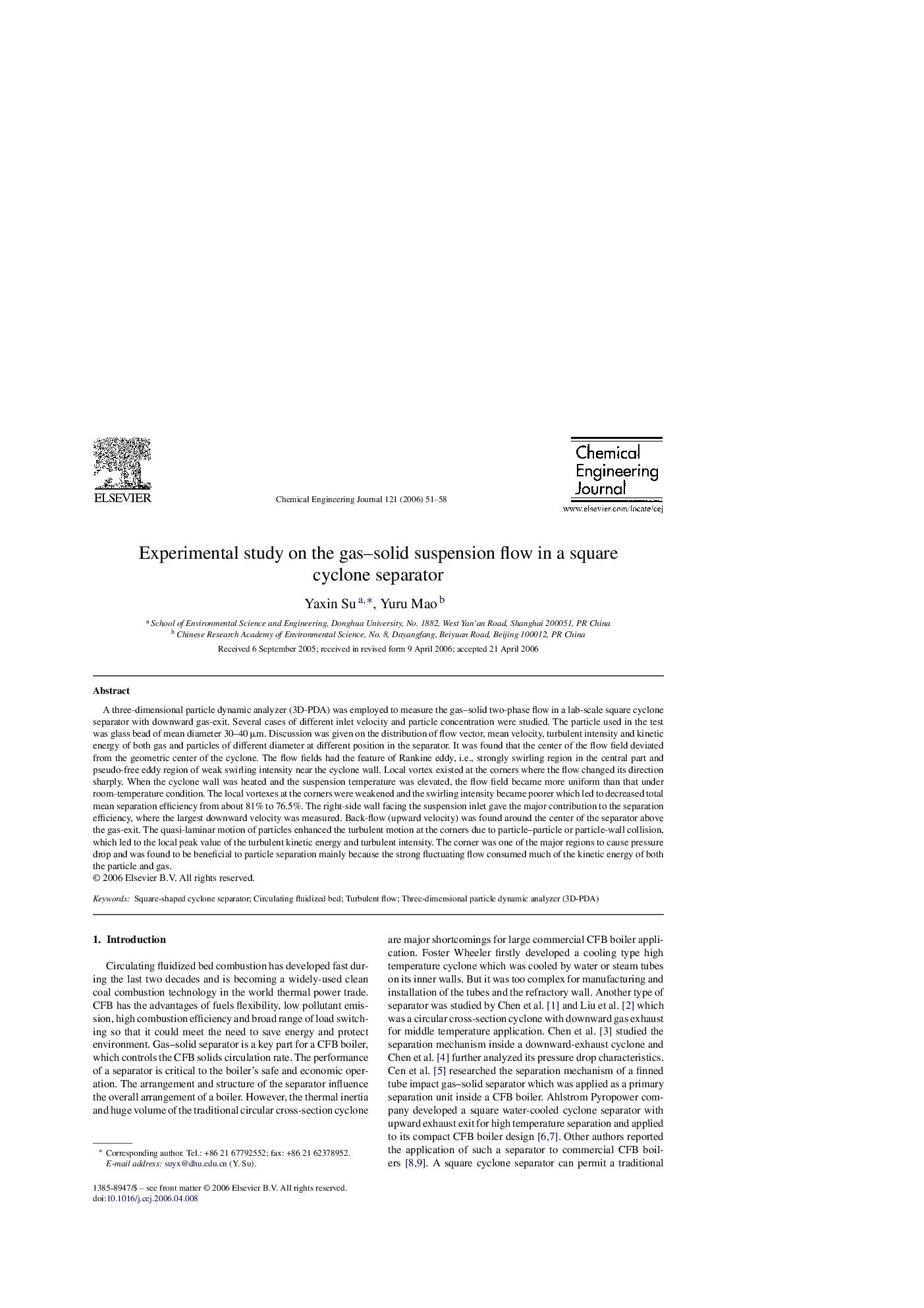| کد مقاله | کد نشریه | سال انتشار | مقاله انگلیسی | نسخه تمام متن |
|---|---|---|---|---|
| 154288 | 456578 | 2006 | 8 صفحه PDF | دانلود رایگان |

A three-dimensional particle dynamic analyzer (3D-PDA) was employed to measure the gas–solid two-phase flow in a lab-scale square cyclone separator with downward gas-exit. Several cases of different inlet velocity and particle concentration were studied. The particle used in the test was glass bead of mean diameter 30–40 μm. Discussion was given on the distribution of flow vector, mean velocity, turbulent intensity and kinetic energy of both gas and particles of different diameter at different position in the separator. It was found that the center of the flow field deviated from the geometric center of the cyclone. The flow fields had the feature of Rankine eddy, i.e., strongly swirling region in the central part and pseudo-free eddy region of weak swirling intensity near the cyclone wall. Local vortex existed at the corners where the flow changed its direction sharply. When the cyclone wall was heated and the suspension temperature was elevated, the flow field became more uniform than that under room-temperature condition. The local vortexes at the corners were weakened and the swirling intensity became poorer which led to decreased total mean separation efficiency from about 81% to 76.5%. The right-side wall facing the suspension inlet gave the major contribution to the separation efficiency, where the largest downward velocity was measured. Back-flow (upward velocity) was found around the center of the separator above the gas-exit. The quasi-laminar motion of particles enhanced the turbulent motion at the corners due to particle–particle or particle-wall collision, which led to the local peak value of the turbulent kinetic energy and turbulent intensity. The corner was one of the major regions to cause pressure drop and was found to be beneficial to particle separation mainly because the strong fluctuating flow consumed much of the kinetic energy of both the particle and gas.
Journal: Chemical Engineering Journal - Volume 121, Issue 1, 1 August 2006, Pages 51–58